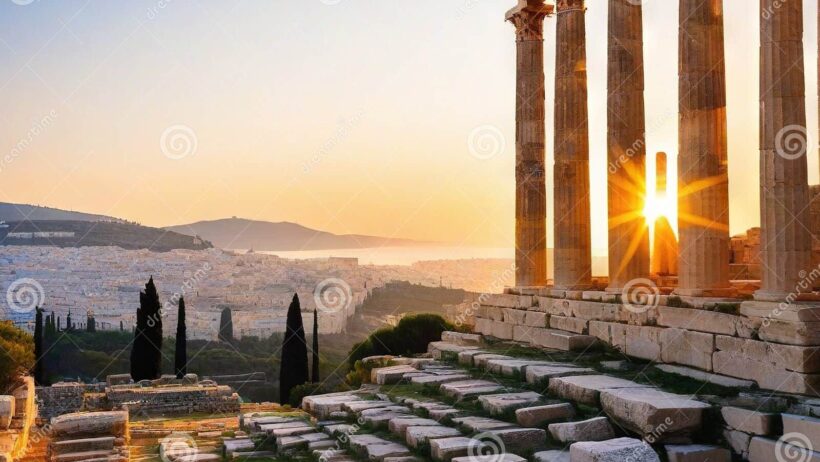Rome, the eternal city, graces the earth with its ancient edifices and a climate that invites wanderers from all corners of the globe. Nestled in the heart of Italy, it enjoys a Mediterranean climate—characterized by hot, dry summers and mild, wet winters. This climatic reality is not merely an incidental backdrop; it sets the stage for a city rich in history, culture, and natural beauty. But what precisely constitutes Rome’s climate, and how has it influenced the city over millennia?
To understand Rome’s climate, it is essential to first delineate the key characteristics of a Mediterranean climate. Typically, such a climate features long, sweltering summers where temperatures can easily soar into the high 30s Celsius (above 100 degrees Fahrenheit). Consequently, the scorching sun bathes the city, creating an almost palpable heat that envelops both inhabitants and transient visitors alike. Conversely, winters graciously pivot from the intense heat, offering a mild reprieve. Daily temperatures in winter hover around the 8 to 15 degrees Celsius (46 to 59 degrees Fahrenheit) range, with occasional rainfall refreshing the parched earth accumulated over the summer months.
The charm of Rome also lies in its seasonal variance, as each facet of the year reveals a different tapestry of life. Spring heralds a vibrant awakening, where flora bursts into color, and the air teems with the fragrance of blooming jasmine and citrus. This season, from March to May, sees increasing temperatures, making it an idyllic time for tourists to explore ruins and piazzas without the oppressive heat of the summer sun.
With summer bearing down in June, the city transforms. The average temperature peeks at around 30 degrees Celsius (86 degrees Fahrenheit), and the sun sets late into the evening. The dry spell prevails, rendering outdoor amphitheaters and al fresco dining experiences particularly delightful. Yet, the aridness can take a toll on water supplies, and the city’s reservoirs often deplete during the height of summer. Roman authorities have increasingly recognized this pressing concern, prompting initiatives to enhance water conservation.
Autumn, beginning in September, showcases a gentle descent into cooler weather, and the return of light rain becomes a welcome novelty. As tourists dwindle, locals emerge to savor the harvest festivals, including the renowned grape and olive harvests that celebrate the land’s agricultural bounty—both fundamental elements of Roman life.
As winter sets in, those hoping to escape the frigid Northern European climates find solace in Rome. The city dons a tranquil, almost ethereal blanket of calm. While rain showers are more frequent, snowfall is a rarity. Winter is less about stark cold and more about cozy gatherings and cultural offerings, including art exhibitions and theatrical performances that thrive during the quieter months.
Part of the allure of Rome’s climate lies in its historical context. Ancient Romans built their architectural masterpieces with meticulous attention to their natural environment. The Pantheon, for instance, boasts a remarkable oculus that not only serves as a skylight but also provides ventilation and an acoustic advantage, enabling sound to carry throughout the space. Such innovative design exemplifies how ancient civilizations harmonized their constructions with environmental nuances.
Moreover, Roman agriculture flourished due to its climate. The fertile plains surrounding the city allowed for the cultivation of wheat, olives, and vines—agricultural staples that continue to define the Italian landscape today. The Romans’ adept understanding of seasonal cycles enabled them to optimize crop yields, thereby ensuring food security that contributed to the empire’s expansion and prosperity.
However, the modern era ushers in challenges that threaten this delicate equilibrium. Climate change looms as an existential crisis for cities like Rome, where the very conditions that once nurtured civilization now present new adversities. Record high temperatures and unpredictable weather patterns strain the city’s infrastructure and water resources. As urbanization continues at a swift pace, the need for sustainable practices becomes paramount. Authorities and activists alike advocate for policies designed to combat climate change and promote resilience against its impacts.
Furthermore, the conservation of historic sites against the ravages of time and climate is a pressing concern. The erosion of stone structures due to pollution and climatic fluctuations poses significant threats to cultural heritage. This has ignited discussions about the balance between tourism and preservation—a topic that generates ongoing debate in urban planning circles.
Rome’s climate does not exist in isolation; it is a vibrant interplay between history, culture, and the environment. The Mediterranean sun, the rhythm of the seasons, and the architectural ingenuity of the ancients have combined to create an enduring narrative. As the city stands today—facing the trials of modernity—it invites both reflection and action. Just as the Romans once adapted to their climate, so too must contemporary society navigate the complexities of an uncertain meteorological future.
As Rome bathes in its characteristic Mediterranean sunlight, it becomes clear that the experience extends beyond mere aesthetics. The city’s climate serves as a vital protagonist in its timeless tale, enticing individuals to delve into both its rich heritage and the pressing challenges it now faces. The eternal city remains a testament to resilience and adaptation, embodying the spirit of humanity’s enduring fascination with the complex interplay of nature and civilization.






